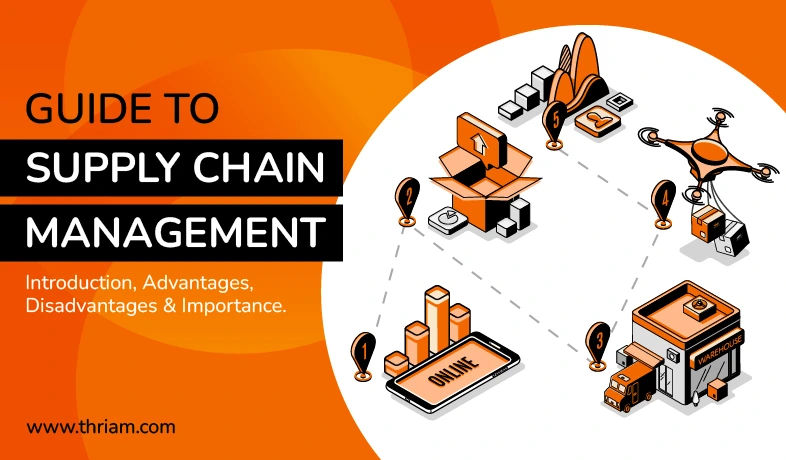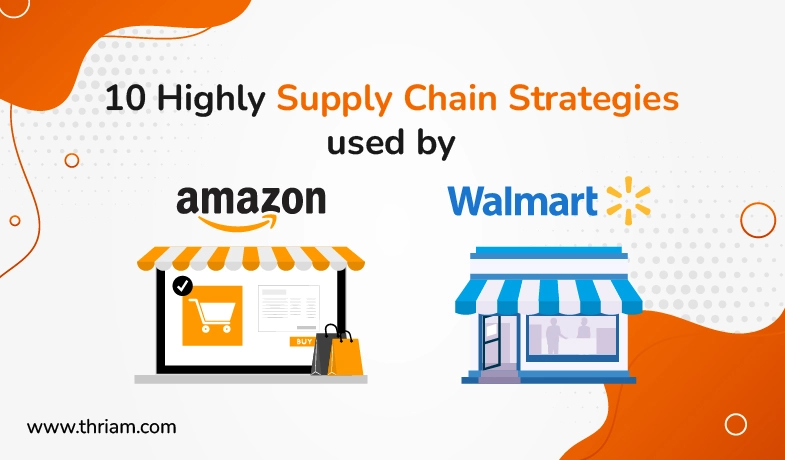The Role of Supply Chain Management in E-commerce: Optimizing Operations for Success
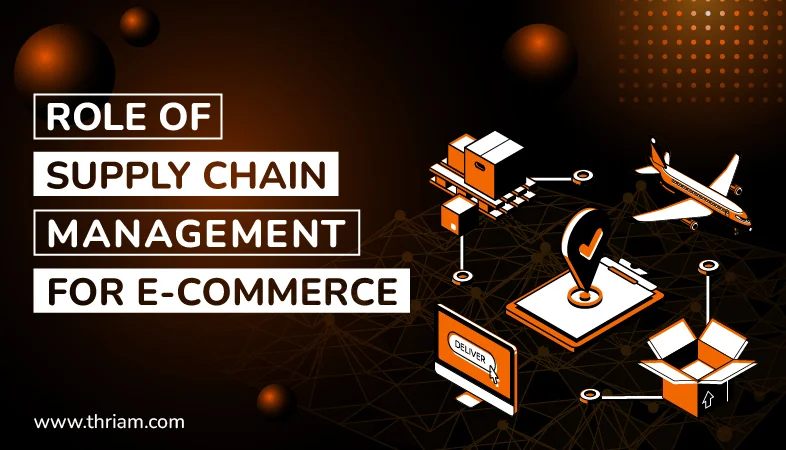
Introduction
In the rapidly growing world of e-commerce, businesses must navigate intricate supply chains to meet consumer demands and stay competitive. Supply chain management plays a vital role in ensuring efficient operations, streamlined inventory management, and exceptional customer experiences. In this blog post, we will explore the key components of supply chain management in e-commerce, examine its benefits, discuss common challenges, and provide solutions to optimize supply chain operations for success.
Key Components of Supply Chain Management in E-commerce
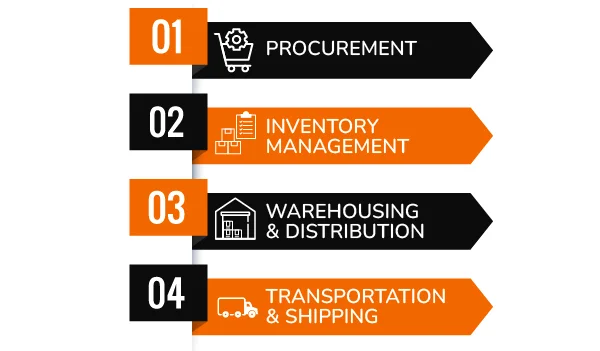
- Procurement: Sourcing and acquiring products for an e-commerce business involves careful supplier selection, negotiation, and cost optimization. By building strong relationships with reliable suppliers, e-commerce businesses can secure quality products at competitive prices, ensuring customer satisfaction and profitability.
- Inventory Management: Effective inventory management is crucial for e-commerce success. By utilizing inventory management software and implementing efficient strategies, businesses can avoid stockouts or overstocks, optimize stock levels, and improve order fulfillment rates. Proper inventory management ensures timely product availability, boosting customer satisfaction and minimizing costs.
- Warehousing and Distribution: Warehouses and distribution centers serve as hubs for storing inventory and fulfilling customer orders. Strategic location selection, optimized storage systems, and efficient order fulfillment processes contribute to successful inventory management and prompt product delivery. Utilizing logistics management software can streamline warehouse operations, reducing costs and facilitating quicker order processing.
- Transportation and Shipping: Efficient transportation systems and shipping methods are vital for timely product delivery and customer satisfaction. E-commerce businesses must carefully select carriers, optimize routes to reduce shipping costs, and provide customers with tracking information to enhance the delivery experience. Embracing technology and automation in transportation and shipping processes can significantly improve supply chain efficiency.
Benefits of Effective Supply Chain Management in E-commerce
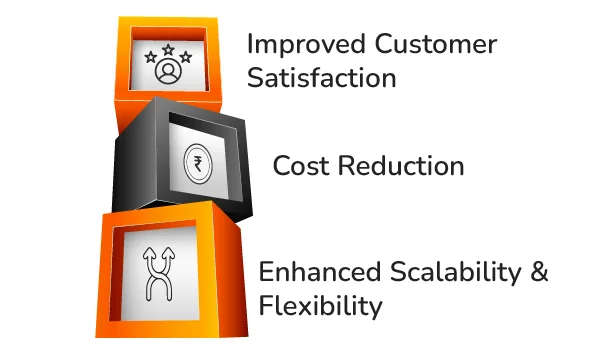
- Improved Customer Satisfaction: A well-managed supply chain enables faster order fulfillment, accurate deliveries, and enhanced customer experiences. With shorter delivery times, reliable tracking, and efficient customer service, e-commerce businesses can build trust and loyalty with their customers.
- Cost Reduction: Optimized supply chain operations can lead to lower procurement costs, reduced inventory holding costs, and improved profitability. Enhanced inventory visibility and demand forecasting allow for better inventory planning, minimizing waste and cost inefficiencies.
- Enhanced Scalability and Flexibility: A robust supply chain infrastructure enables e-commerce businesses to adapt to changing market demands, scale their operations effectively, and expand into new markets. A flexible supply chain can quickly respond to fluctuations in customer demand and ensure continuous growth.
Challenges and Solutions in Supply Chain Management for E-commerce
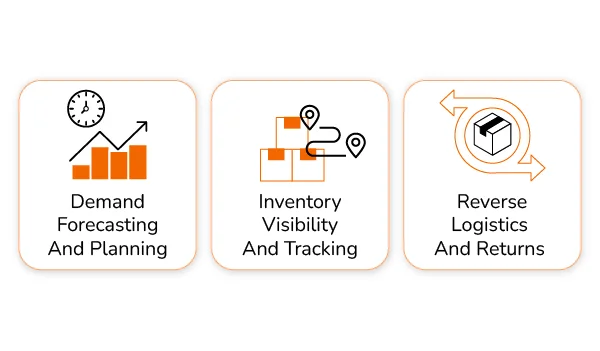
- Demand Forecasting and Planning: Accurately predicting customer demand is a challenge in the e-commerce industry. Utilizing historical data, market trends, and advanced analytics tools can aid in accurate demand forecasting, ensuring optimal inventory levels and minimizing stockouts or overstocks.
- Inventory Visibility and Tracking: Maintaining real-time visibility of inventory across multiple sales channels is crucial for successful inventory management in e-commerce. Implementing inventory management software and automated tracking systems can provide real-time data, allowing businesses to efficiently manage stock levels and improve order fulfillment.
- Reverse Logistics and Returns: Handling returns in e-commerce involves complex processes, including reverse logistics, customer refunds, and restocking. By implementing clear return policies, efficient communication channels, and automated return management systems, businesses can mitigate the challenges associated with returns and maintain customer satisfaction.
Real life examples supply chain in E-commerce
Real-life examples of successful e-commerce businesses implementing efficient supply chain management practices can inspire and provide insights for others. For example, Amazon, with its extensive network of distribution centers, streamlined delivery processes, and advanced logistics systems, has set the benchmark for supply chain excellence in e-commerce.
- Amazon: As mentioned earlier, Amazon is the epitome of supply chain excellence in e-commerce. Their extensive network of fulfillment centers strategically located around the world allows for efficient inventory storage and order fulfillment. They have optimized their transportation and delivery processes, offering various shipping options to customers, including their Prime service for guaranteed two-day delivery. Amazon utilizes advanced logistics technology and data-driven analytics to manage their supply chain, ensuring timely deliveries and exceptional customer experiences.
- Alibaba: Alibaba, the leading Chinese e-commerce company, has revolutionized supply chain management in the B2B domain. Through its online platform, Alibaba connects suppliers and manufacturers with buyers from around the world, streamlining the procurement process. They leverage data analytics and artificial intelligence to provide personalized recommendations and optimize sourcing strategies for businesses. Alibaba's supply chain management system, known as "One Touch," offers end-to-end visibility, enabling efficient order processing, inventory management, and logistics coordination.
- Zara: Zara, a global fashion retailer, is renowned for its fast-fashion model and agile supply chain. Their supply chain management strategy focuses on vertical integration, allowing them to control the entire production process, from design to manufacturing and distribution. By leveraging technology and data analytics, Zara can quickly analyze market trends and customer preferences, enabling them to respond swiftly and replenish inventory in line with demand. This agile supply chain model helps Zara reduce lead times and bring new products to market promptly, keeping up with rapidly changing fashion trends and ensuring customer satisfaction.
Conclusion:
In the fast-paced world of e-commerce, supply chain management plays a vital role in optimizing operations and ensuring success. By effectively managing procurement, inventory, warehousing, transportation, and shipping, e-commerce businesses can enhance customer satisfaction, reduce costs, and achieve scalability. Addressing challenges such as demand forecasting, inventory visibility, and reverse logistics will further strengthen a business's supply chain. Embracing best practices and leveraging technology will position e-commerce businesses for growth and competitiveness in the evolving digital landscape. So, take charge of your supply chain management today and witness the transformation in your e-commerce operations.
